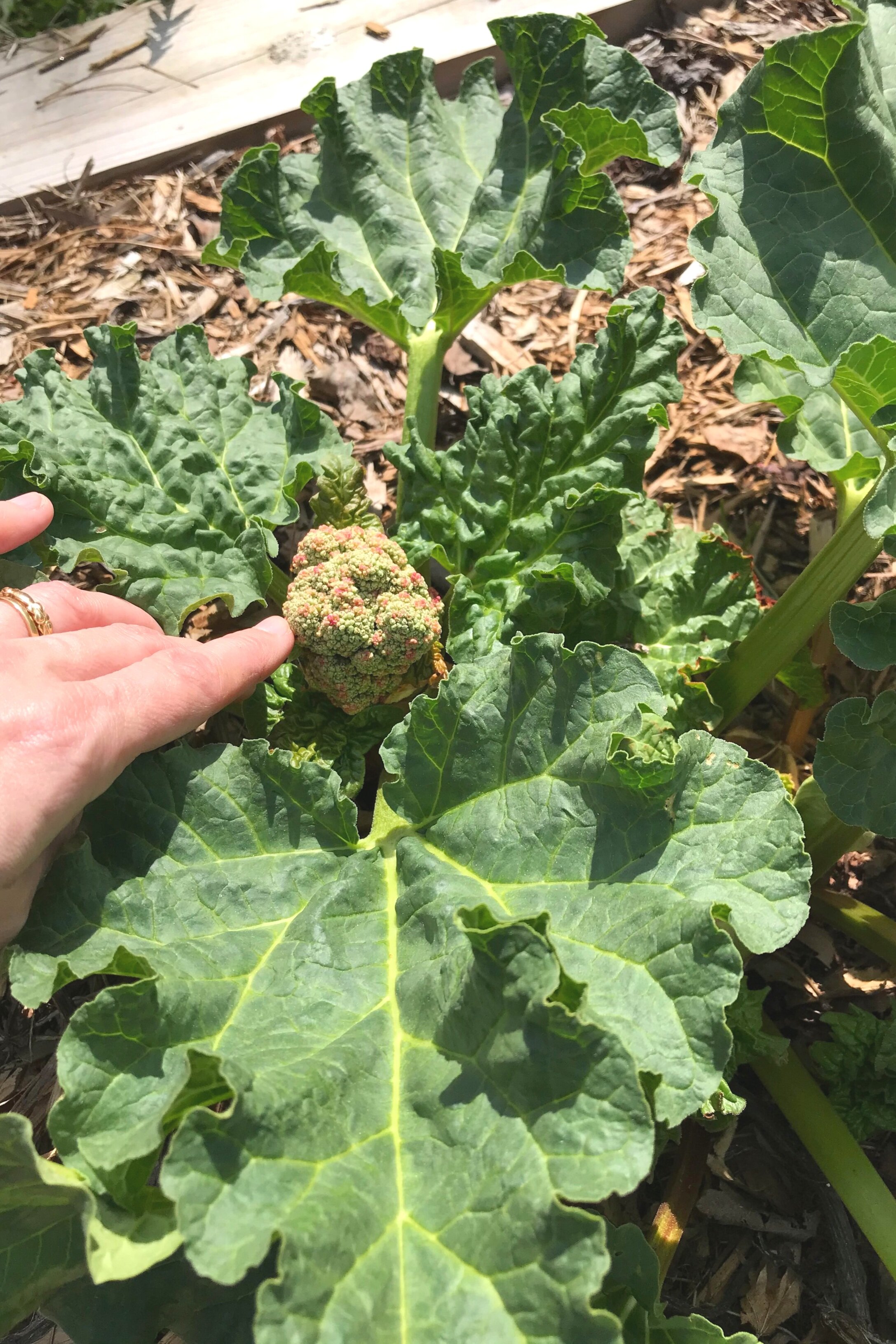Growing rhubarb in Ohio
Also known as the ‘pie plant’, rhubarb is a fantastic addition to your garden. It is tolerant to Ohio’s frost prone Spring and will actually start growing through the melting snow. It is one of the first crops to pick in your garden.
Rhubarb 'Victoria' plant
What I like about growing rhubarb in Ohio:
Hardy Perennial
Easy to grow
Pest insects tend to leave it alone
Deer and rabbit resistant
Low maintenance!
Small size, great for any size garden.
Pretty look with it’s red or pinkish stems (I plant it in my landscaping)
Lives for decades (Pick a permanent spot in your yard)
Can be divided after 7-10 years
Uses:
Pies
Jams
Muffins
Desserts
Freezing
Rhubarb 'Crimson Red' plant
Harvesting & Storage:
Pick in the Spring April-June when stems are about the size of your finger. Make sure not to over-harvest plants. When stems start growing thin, stop picking so plants do not get over-stressed.
Pick by grasping base of stem twist and pull so that it snaps off.
Freshly picked stalks are at peak flavor and crispness. They can be stored fresh for a week in the refrigerator. Rhubarb stalks can also be cut into half-inch pieces and frozen.
*Do not eat the leaves or roots of rhubarb! They are toxic to humans. It has high levels of oxalic acid which can cause kidney stones and kidney failure. The stems are safe to eat*
Varieties that I grow in Ohio:
Victoria rhubarb: hardy heirloom with large green pink blush stems (you need to cut flower stalks to encourage edible stem growth)
Crimson Red rhubarb: tasty and tender with bright red stems
Planting rhubarb
Rhubarb plants like sun or partial shade and well-drained soil. They do not like sitting in soggy or hard, dry clay soil as we have in most of Ohio. The soil can be amended to help promote better growth
Maturity:
Plants reach maturity around 3 years. Do not harvest stems the during the first year.
Sun
Full sun or partial shade
Growth spread & height:
2-3 feet tall depending on variety
3 feet wide
Prepare the area
Materials
Peat Moss: 1 cubic foot per plant
High quality top soil: 10 pounds per plant
Composted manure: 10 pounds per plant
A slow release fertilizer like Espoma Organic Garden Tone Herb and Vegetable Food
Optional: Professional grade garden fabric
Garden staples
Mulch: I like pine bark or pine needles (free in my yard)
Tools
Gas or electric powered tiller
Shovel
Garden Cultivator: great hand-tool for breaking up soil
Till area
Till about 5 inches deep to break up the soil.
Add soil amendments
Add peat moss, topsoil, composted manure to the tilled planting area. Till again to mix well. Dig a hole large enough for the top of the root ball to be level with the ground.
Optional: Cover with professional-grade garden fabric
This will help control weeds especially if it is in your landscaping. Make sure to leave a 1 foot opening from the base of the plant because rhubarb is a spreading type plant. Use garden staples to secure the fabric, if using.
Mulch
Cover the fabric (if using) and the bare area around the plant with enough mulch so you can’t see fabric or soil anymore.
Water
Water thoroughly around the plant.
Rhubarb 'Victoria' plant, flower stem
Maintenance
Weeding! The garden fabric and mulch will help control the weeds.
Sprinkle a slow release fertilizer like Espoma Organic Garden Tone Herb and Vegetable Food around plants in the spring. Follow recommended directions on the package.
*Cut rhubarb flower stalks to encourage more edible stem growth.*
Water during dry periods in spring and summer, especially when newly planted.
Dividing
Rhubarb can be divided every 5-8 years. This will help encourage strong plant growth. When the plant stems are looking thin, it is time to divide them. Do this in early spring or fall when the plant is dormant.
Happy Harvesting!









